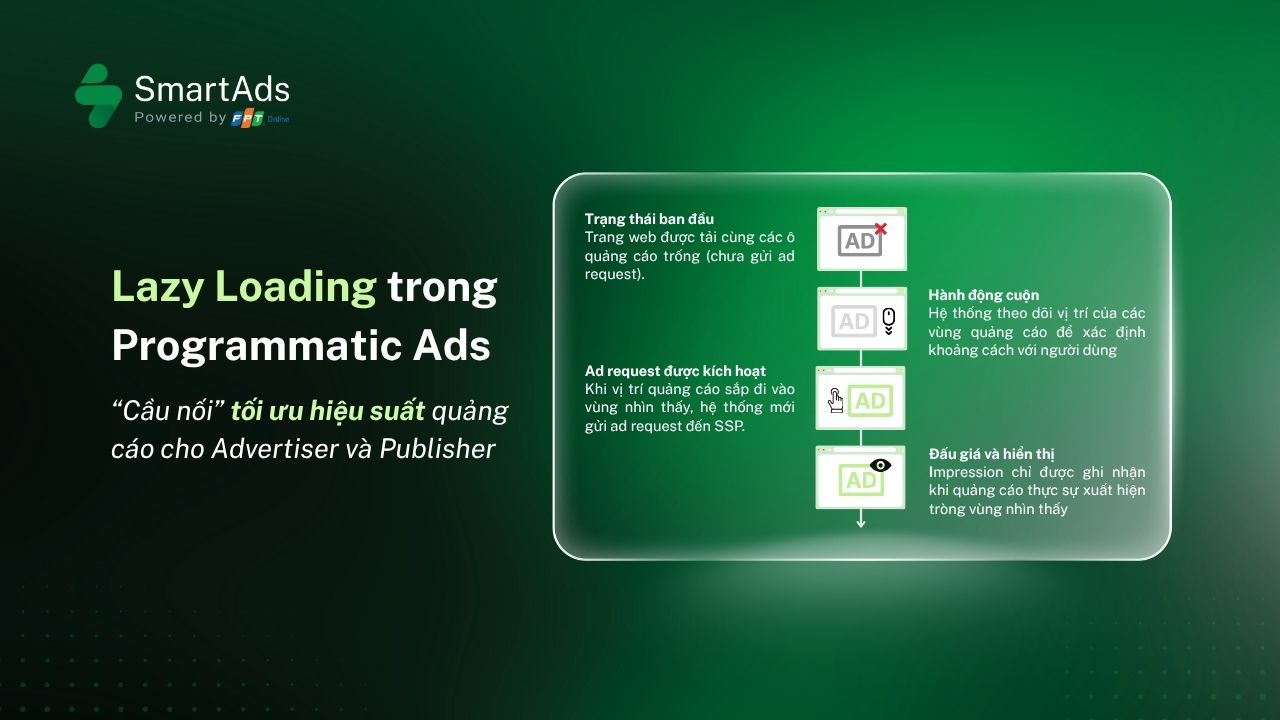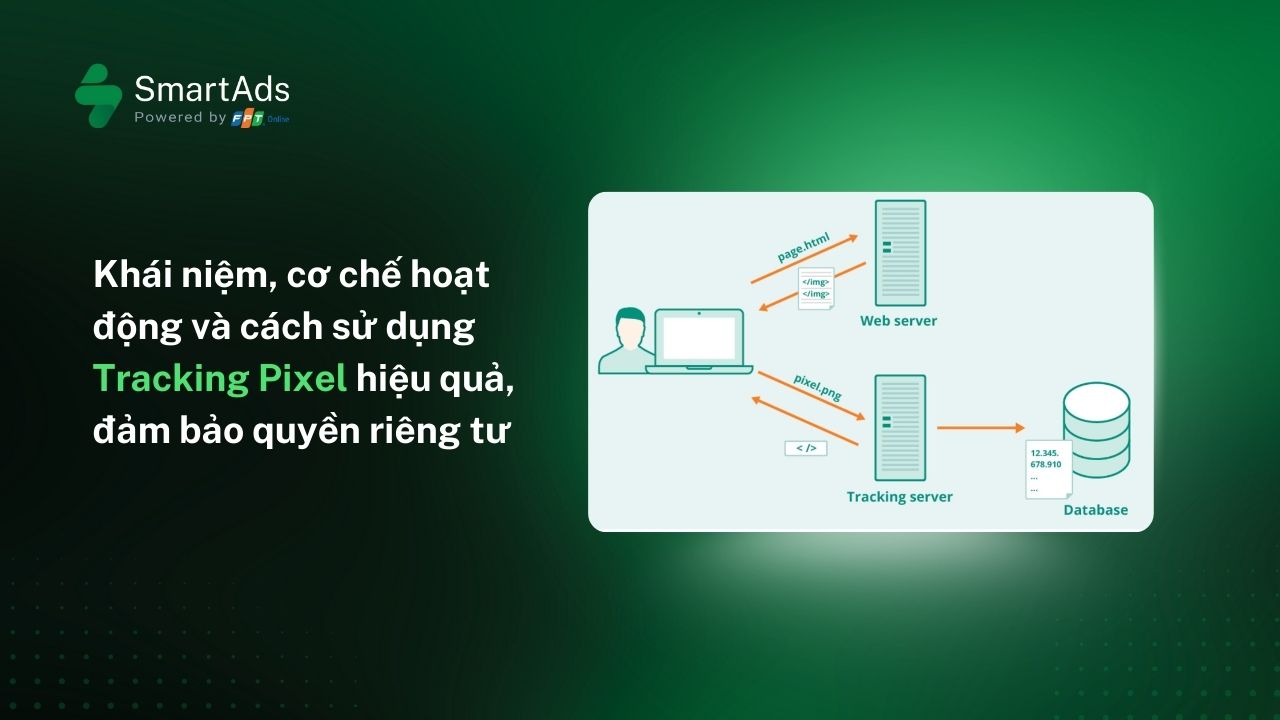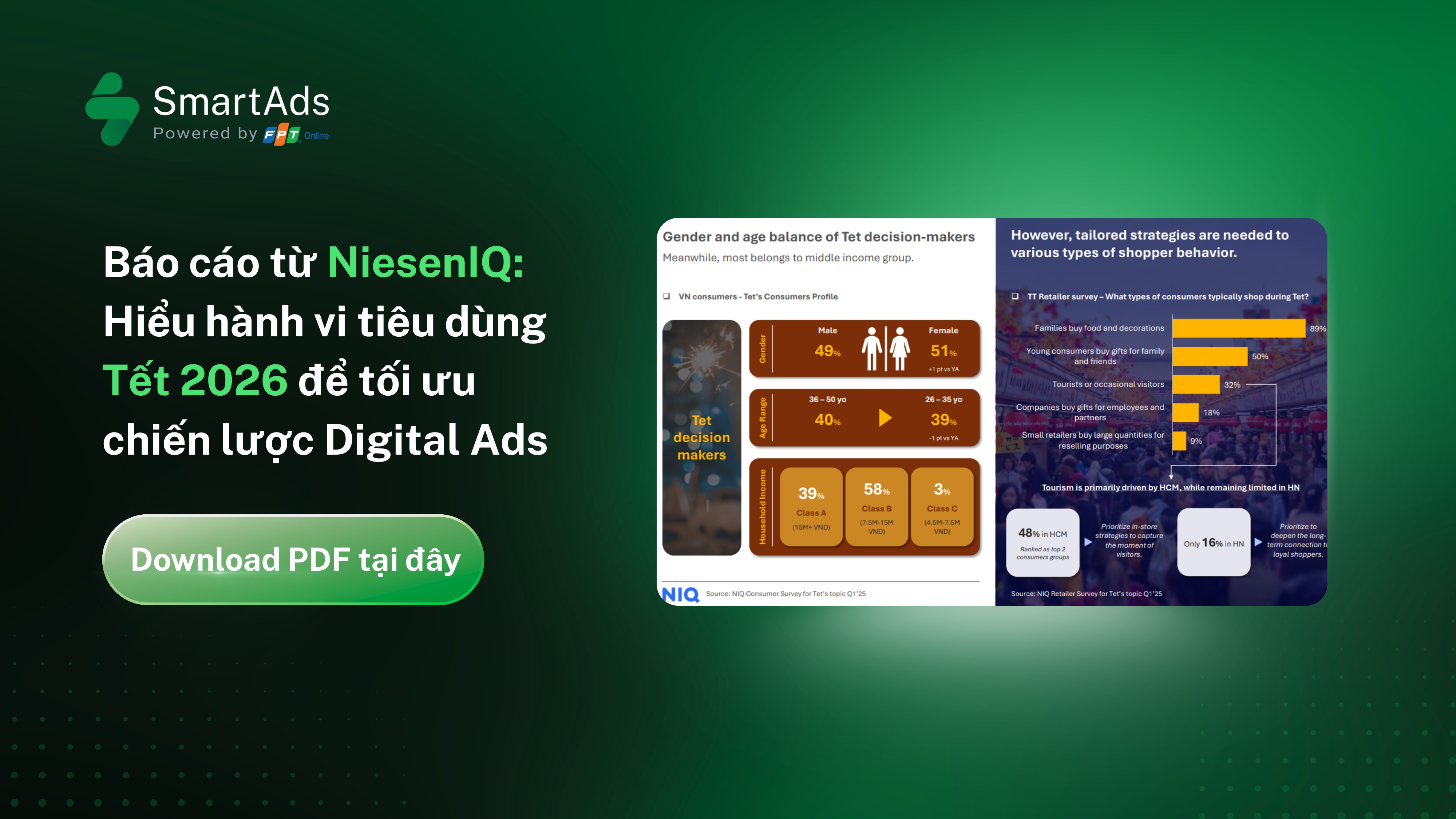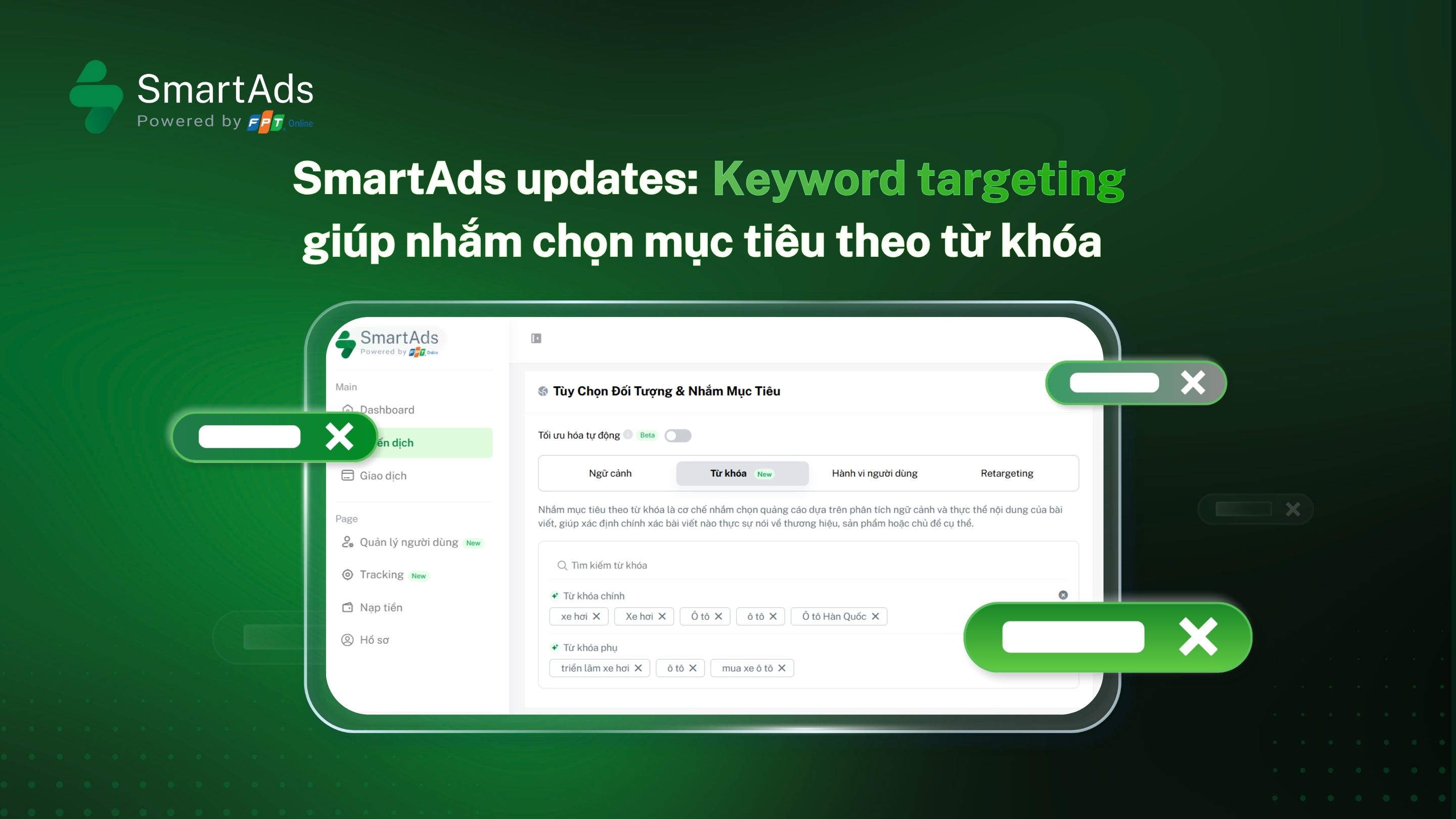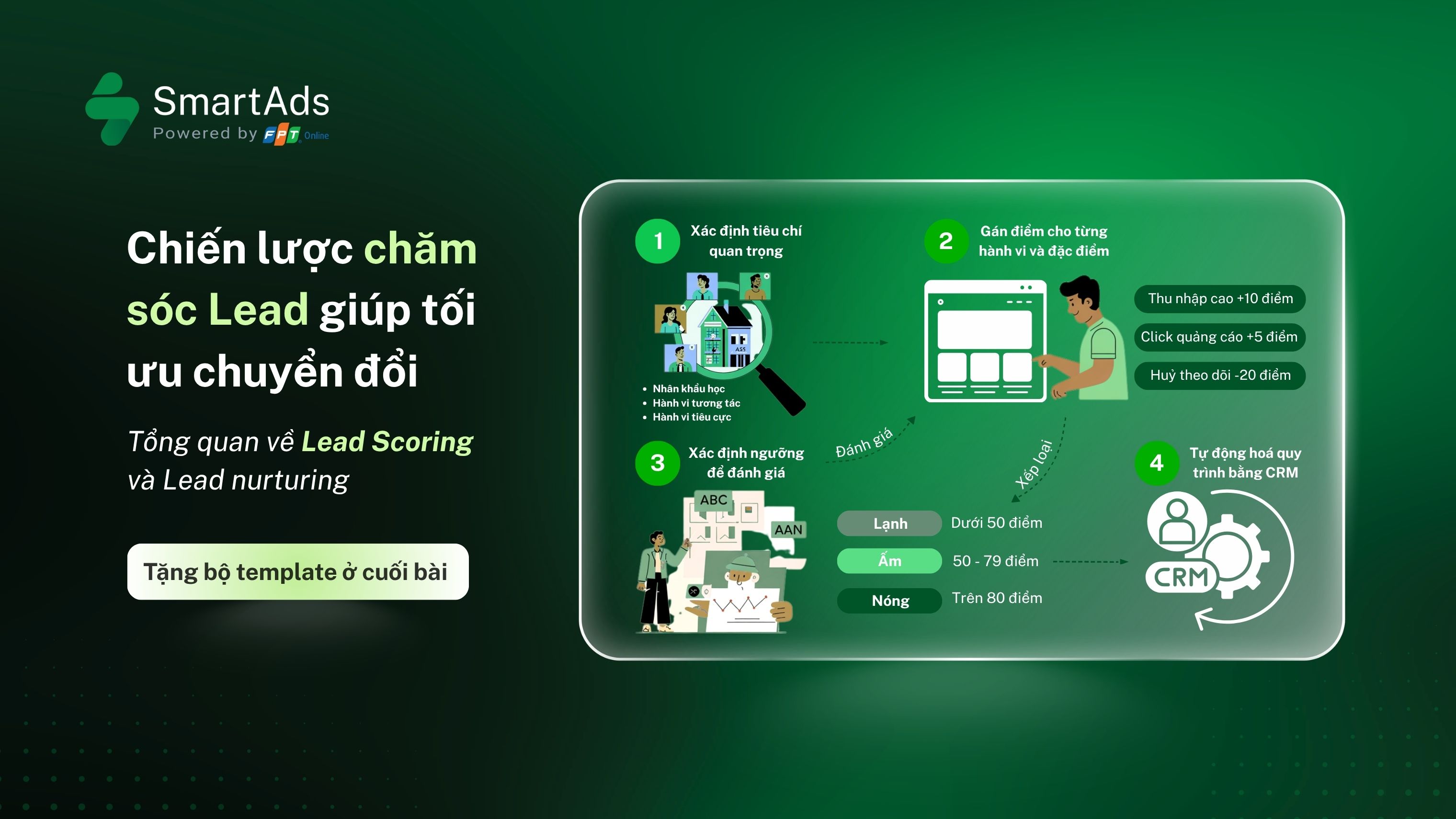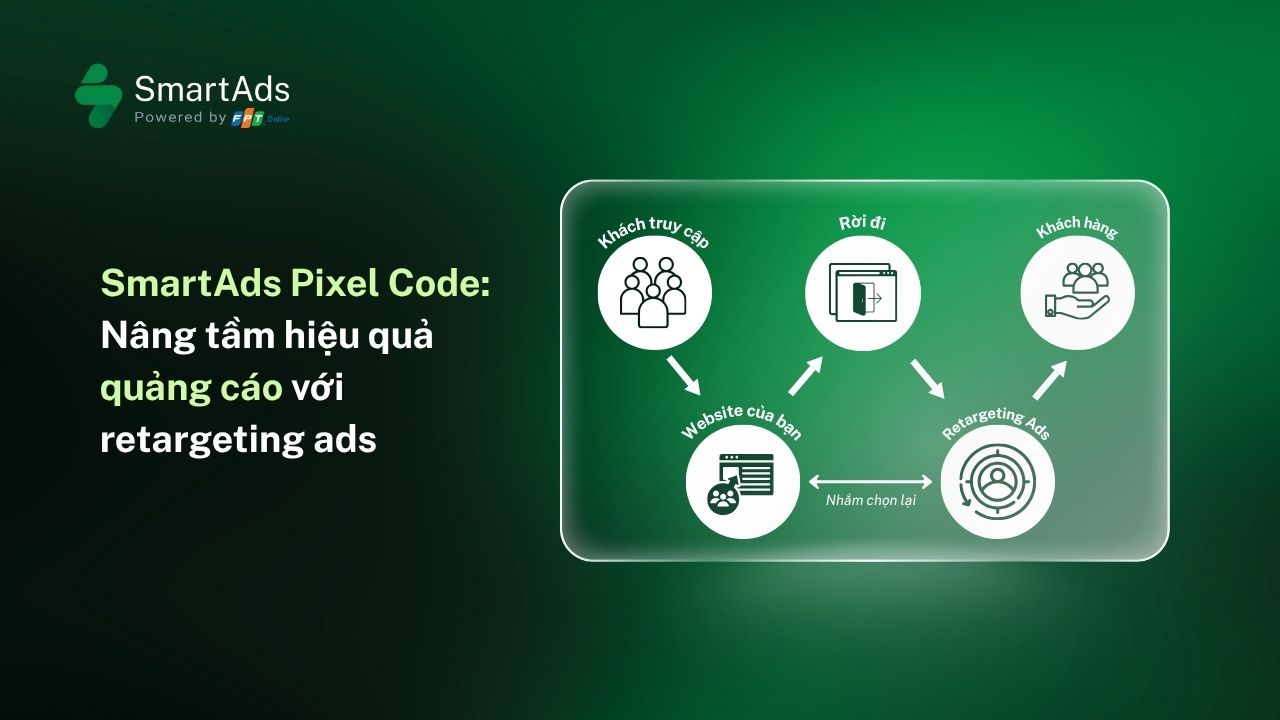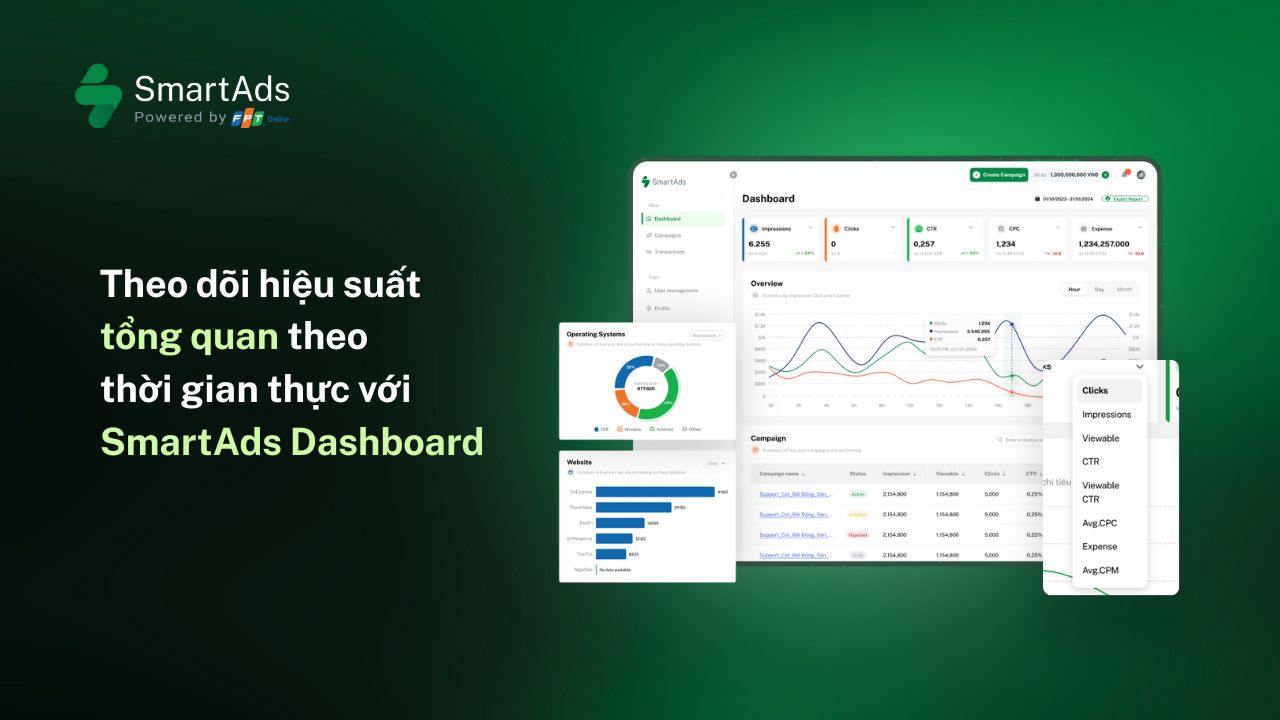1. What Is Lazy Loading?
Lazy loading is a technique that defers the loading of content or ads until the element is about to appear in the user’s viewport.
Instead of loading all ads immediately when the user visits a page, the system only triggers an ad request once the banner is within the viewport — the actual visible area on the user’s screen.
Example: Suppose an article on VnExpress contains five ad slots. With lazy loading, only the first two ad slots — the ones visible right away — are loaded initially. As the reader scrolls down, the remaining ads are sequentially requested and displayed.
2. Types of Lazy Loading in Digital Advertising
Depending on optimization goals and user experience priorities, Lazy Loading can be implemented in several ways. In programmatic advertising, the two most common methods are Pixel-based Lazy Loading and Viewport-based Lazy Loading.
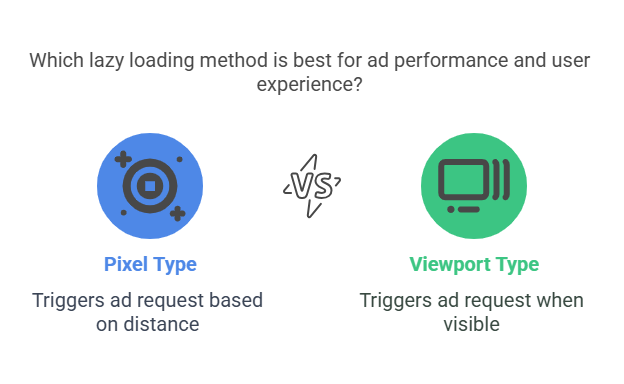
2.1. Pixel Type Lazy Loading
In this method, the ad request is sent when the user scrolls close to the ad slot, within a predefined distance measured in pixels.
For example: if configured at “500 pixels,” the ad will be requested when the user is about 500px away from the banner while scrolling.
-
Advantages: Loads ads slightly before they appear in view, ensuring the banner is ready to display instantly when the user reaches that position. This approach is ideal for fast-scrolling environments (such as news portals or social networks), avoiding temporary “blank slots” while the ad loads. It also balances user experience (UX) and digital advertising performance: not too early to slow the page, yet early enough to guarantee smooth rendering.
-
Disadvantages: If users scroll quickly and leave the page, ad requests may still be triggered without the ad being viewed — resulting in a small percentage of impressions counted as “non-viewable.”
>>> What is Viewability? How is a Viewable Impression Defined?
2.2. Viewport Type Lazy Loading
Unlike the pixel-based approach, Viewport-based Lazy Loading triggers the ad request only when the ad slot actually enters the user’s viewport — meaning the banner is truly visible on screen.
-
Advantages: Ensures nearly perfect viewability, as ads are requested and displayed only when they are in sight. This method delivers more transparent and accurate measurement data, reflecting real impressions and true digital advertising performance.
-
Disadvantages: May cause a slight delay when ads load right at the moment of view, especially on slow connections or if the ad server response is delayed. This method is better suited for pages with slow scrolling or static content, where users pause and engage longer.
2.3. Other Technical Variations in Web Development
Beyond the two main types above, in general web development, Lazy Loading can also be implemented using other mechanisms such as:
-
Lazy Initialization: Initializes resources only when needed, saving memory and improving efficiency.
-
Virtual Proxy: Creates a temporary proxy object that represents the real one and only loads the actual object when required.
-
Ghost Objects or Value Holders: Acts as placeholders or temporary storage, fetching real data only upon user interaction.
However, in the context of digital advertising, the two main approaches — Pixel Type and Viewport Type — remain the industry standards, thanks to their ability to balance technical efficiency, UX, and commercial value for both Advertisers and Publishers.
3. How Lazy Loading Works in Programmatic Ads
In programmatic ad ecosystems, ads are delivered automatically through platforms such as SSP (Supply-Side Platform) and DSP (Demand-Side Platform).
When Lazy Loading is activated, the process typically involves four key steps:
-
Step 1 – Initial State: The web page loads with empty ad slots (no ad request sent yet). This helps the page render faster and reduces browser load — particularly important for mobile devices.
-
Step 2 – Scrolling Action: As users scroll, the system tracks the position of each ad slot. Scripts such as Google Publisher Tag or SDKs determine the distance between the user’s viewport and the ad position.
-
Step 3 – Ad Request Trigger: When an ad slot approaches the viewport and reaches the configured pixel threshold, the system sends an ad request to the SSP. This ensures ads are loaded precisely on time without wasting bandwidth or computing resources.
-
Step 4 – RTB & Impression: The SSP conducts a Real-Time Bidding (RTB) auction to select the most relevant ad to display. An impression is only counted once the ad actually appears on the screen. This approach ensures more accurate measurement and increases the ratio of viewable impressions — enhancing overall programmatic advertising performance.
>>> What Is Ad Placement? How to Optimize ATF and BTF Ad Positions?
This technique aligns UX (User Experience) with advertising efficiency — creating a balanced approach that benefits both advertisers and publishers, instead of prioritizing only one side.
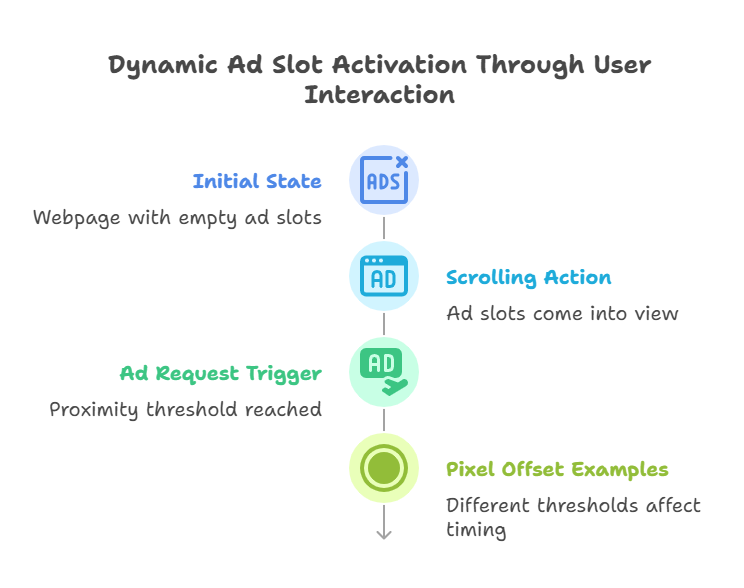
4. Benefits of Lazy Loading for Publishers
4.1. Optimized Page Speed and User Experience
One of the most visible benefits of Lazy Loading is its ability to shorten the initial page load time.
Typically, when a user visits a website, the browser loads multiple assets such as images, videos, scripts, and ads simultaneously. With Lazy Loading, only the content within the above-the-fold area is loaded immediately; ads or images below the fold are loaded only when users scroll near their position.
This approach helps:
-
Reduce HTTP requests and JavaScript execution during the initial load: Minimizes server load and accelerates the rendering of key content that users care about most.
-
Improve SEO performance: Search engines like Google prioritize pages with faster load times and optimal INP (Interaction to Next Paint) metrics.
-
Enhance user retention: Faster-loading sites keep users engaged longer, lowering bounce rates and increasing on-site duration.
-
Improve mobile experience: As most web traffic now comes from mobile devices, reducing initial load size ensures smoother performance even on slower connections.
By implementing Lazy Loading, publishers can deliver faster websites, improve user experience, and indirectly boost both SEO rankings and publisher monetization potential.
4.2. Improved Viewability and Actual Revenue
Because content and ads are loaded only when users are likely to see them, publishers experience higher viewable impression rates. This leads to better CPM (Cost per Mille) performance and stronger real revenue growth.
4.3. Reduced Unnecessary Ad Requests
In the past, ad slots at the bottom of a page would load even if no one scrolled that far. Lazy Loading eliminates these redundant requests, reducing server load and operational costs.
5. Benefits of Lazy Loading for Advertisers
5.1. More Efficient Ad Spending
Lazy loading helps advertisers optimize their budgets by ensuring that each ad impression has a real chance of being viewed by a genuine user.
Specifically:
-
Pay only for viewable impressions: Ads are loaded only when users scroll close to the placement, instead of automatically loading all ad slots as soon as the page opens.
-
Reduce budget waste: Avoid paying for “invisible impressions” — ads that are technically served but never seen by users.
-
Move toward a “pay for attention” model: Advertisers invest only when there’s a genuine opportunity to capture attention, rather than paying for empty pixels on a page.
5.2. Better Campaign Performance
When ads appear at the exact moment users engage with the content, the likelihood of capturing attention and driving action increases significantly:
-
Higher engagement: Ads load naturally as users scroll, creating a smoother experience that feels less intrusive or “forced.”
-
Improved viewable time: Lazy loading extends the actual duration that an ad stays visible in the user’s viewport, enhancing brand awareness and recall.
-
Stronger ad recall: Ads displayed at the right time and in the right context are more likely to be perceived organically and remembered longer.
-
Increased CTR (Click-Through Rate): When users see ads in a relevant and attentive context, the probability of clicking rises accordingly.
5.3. More Transparent Data
Lazy loading allows advertisers to measure true ad performance more accurately, minimizing wasted impressions that were never actually served or viewed.
-
Eliminate “ghost impressions”: The system only counts impressions when the ad has fully loaded and appeared within the user’s viewport.
-
Support automated optimization: Transparent data enables programmatic advertising platforms and DSPs to auto-optimize delivery based on real performance metrics.
-
Strengthen advertiser–publisher trust: Reports reflect true value, helping both parties assess ROI clearly and reinvest with confidence.
6. Lazy Loading – The Bridge Between Advertisers and Publishers
One of the most common challenges in programmatic advertising is the data discrepancy between publishers and advertisers — particularly around ad request, impression, and fill rate reports.
With lazy loading, this mechanism helps align tracking logic across systems, reducing discrepancies to around 5–10%, which is considered reasonable and acceptable in the industry.
Why does this discrepancy still exist?
-
Different tracking points between the supply-side (SSP) and demand-side (DSP): Publishers typically log impressions early (as soon as the ad request is sent), while advertisers count only after the ad is actually rendered.
-
Users may exit the page before the ad finishes loading.
-
Connectivity issues, caching, or ad blockers can also impact tracking.
However, with the “load-on-demand” mechanism of lazy loading, these discrepancies are significantly reduced and the data becomes far more transparent compared to traditional full-load models.
7. Fill Rate and Ad Request – True Measures of Advertising Performance
In the digital advertising ecosystem, the fill rate represents the percentage of successfully served ads compared to total ad requests.
Lazy loading directly impacts fill rate — focusing on quality over quantity.
Example:
-
Before: 1,000 ad requests → 800 impressions (fill rate 80%)
-
With lazy loading: 600 ad requests (triggered only when near view) → 570 impressions (fill rate 95%)
The result: fewer wasted requests, higher viewability, and optimized inventory utilization for better publisher monetization.
This makes lazy loading a smart optimization solution not only for publishers looking to maximize revenue, but also for advertisers aiming to improve ROI and overall digital advertising performance.
Conclusion
As the digital advertising industry increasingly prioritizes performance and user experience, lazy loading stands out as more than just a page speed enhancement — it is a strategic tool that aligns both publishers and advertisers toward greater efficiency and transparency.
About SmartAds – formerly known as Eclick, developed by FPT Online, one of Vietnam’s leading pioneers in technology and digital media. Through continuous innovation and partnerships with top-tier premium publishers, SmartAds has established itself as a trailblazer in elevating native advertising standards in Vietnam. The platform aspires to become a trusted partner for brands on their journey to win customers through technology-driven solutions. If you’re seeking an advertising solution that integrates lazy loading technology, create your account and set up your first campaign on SmartAds here.
